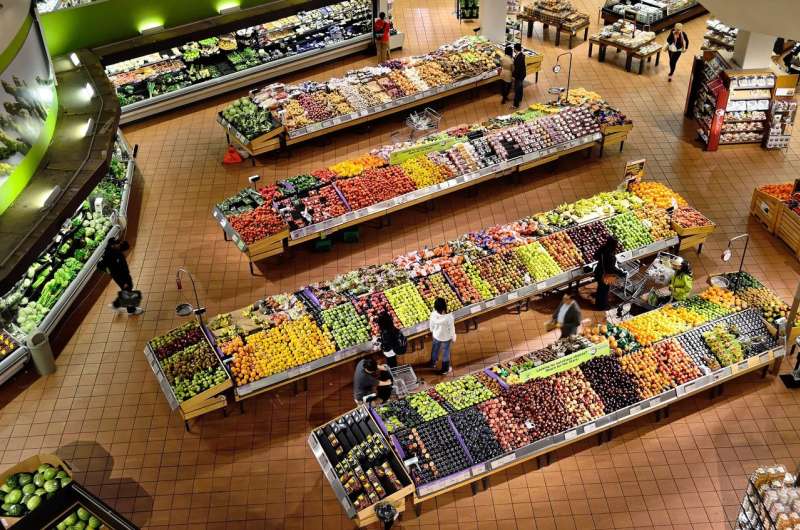Shoppers choose healthier groceries when supermarket layout promotes fruit and vegetables over candy

Removing confectionery and other unhealthy products from checkouts and the end of nearby aisles and placing fruit and vegetables near store entrances prompts customers to make healthier food purchases, suggests a new study led by Christina Vogel and Janis Baird from the University of Southampton publishing September 7 in the open access journal PLOS Medicine.
Conducted in partnership with the national supermarket chain Iceland Foods Ltd, the study took place in a selection of Iceland stores in England and monitored store sales as well as the purchasing and dietary patterns of a sample of regular customers.
The authors found store-wide confectionery sales decreased and fruit and vegetable sales increased when non-food items and water were placed at checkouts and at the end of the opposite aisles, and an expanded fruit and vegetable section was repositioned near the store entrance. Beneficial effects were also observed for household fruit and vegetable purchasing and individual dietary quality.
This research is more comprehensive than previous studies testing whether placement strategies can promote healthier food purchasing which have been limited in scope (e.g., assessing only a single location (i.e., checkouts) or placing healthy and unhealthy products together). This study was able to measure effects of storewide layout shifts aiming to reduce shopper exposure to low-nutrition food on store sales, customer loyalty card purchasing patterns and the diets of more than one household member.
Dr. Vogel concludes: “Altering the layouts of supermarkets could help people make healthier food choices and shift population diet towards the government’s dietary recommendations. The findings of our study suggest that a healthier store layout could lead to nearly 10,000 extra portions of fruit and vegetables and approximately 1,500 fewer portions of confectionery being sold on a weekly basis in each store.”
Source: Read Full Article
